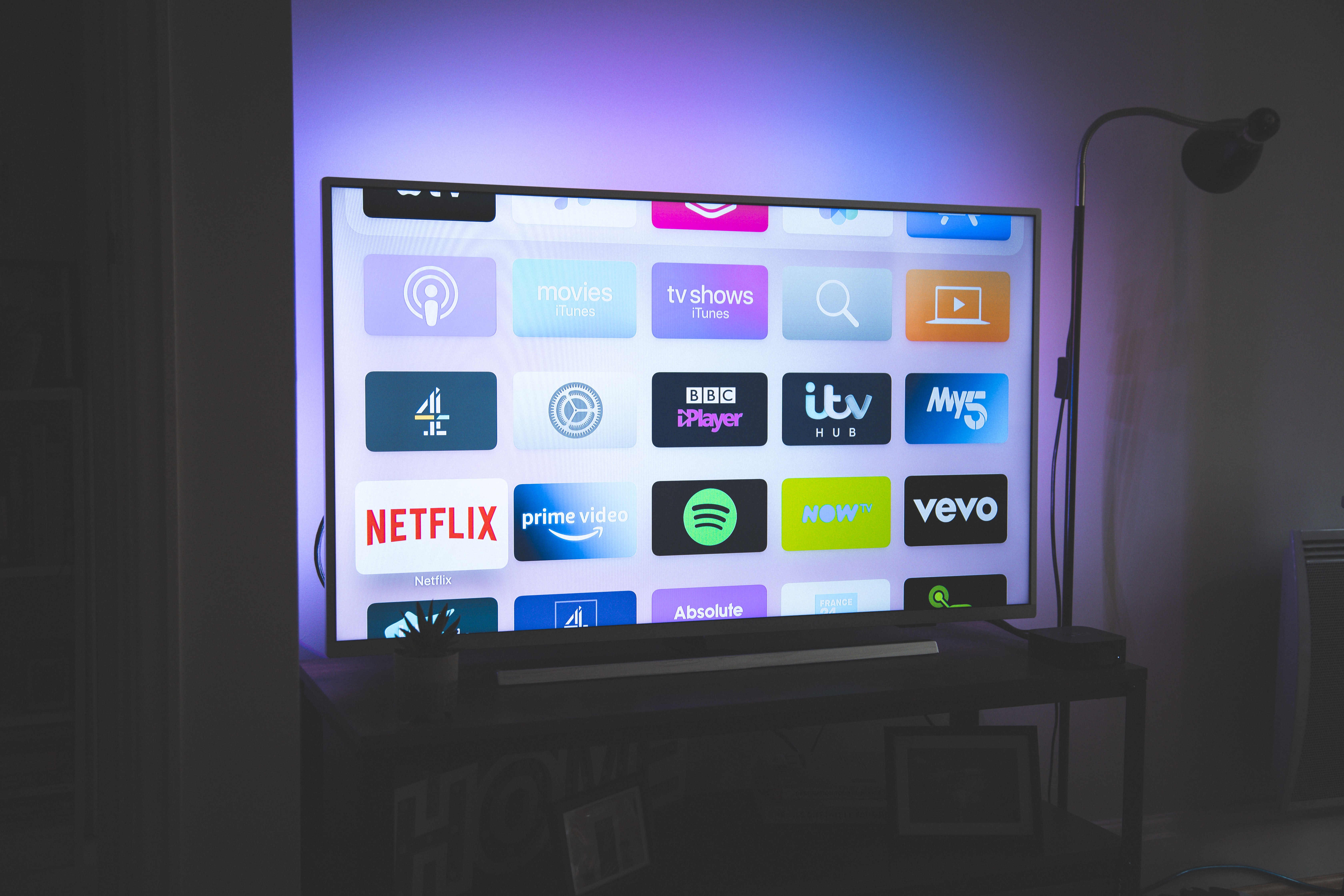What is "Made for Advertising" and Why Should You Avoid It?
As Made for Advertising (MFA) settles into becoming a permanent fixture across the advertising ecosystem, marketers need to understand what it is,...

No matter your industry, reputation matters, especially regarding the sites you choose for digital advertising without relying on users’ personal data. Organizations are (or, at least, should be) increasingly concerned about brand safety; consumers and clients have more choices than ever when it comes to purchases and services.
One poorly placed ad could mean the difference between landing a new client and attracting the scorn of the Twitterverse to tarnish your brand’s reputation—and send sales spiraling. Conversely, an audience viewing a resonating ad at the right time on a reputable media outlet could spark fierce brand loyalty.
Building and protecting your brand’s reputation across the advertising ecosystem isn’t always an easy balance to strike. We’ll go over how you can advertise to new audiences while following a few simple steps to create effective brand safety measures.
|
Table of Contents |
Following the Interactive Advertising Bureau’s (IAB) definition, brand safety measures protect a brand’s reputation by avoiding showing ads near inappropriate content. Some examples of inappropriate content include:
Implementing brand safety measures reduces the chances of inadvertently placing an ad next to unsavory content through online advertising and protecting your reputation. Doing so can tarnish your reputation—and prevent ad revenue from coming in. For example, CNN aired Applebee’s dancing cowboy commercial alongside coverage of the Ukraine invasion, prompting backlash from both consumers and the casual dining giant, ending with it pulling its ads from the news outlet.
Few brands would knowingly choose an ad placement near content that could potentially harm their reputations. The problem is, brands don’t always know where on a page their ad might be placed. For example, if you’ve paid for an ad on a news site, you’d anticipate that your ad’s placement would complement the subject matter. Or, at the very least, not come across as tone deaf or—at worst—cruel.
We have malgorithms to thank for poor placements. Malgorithms occur when an ad’s contextual meaning doesn’t fit a page’s subject matter. More specifically, it’s a pretty glaring misalignment.
Your brand can avoid embarrassing or reputation-tarnishing malgorithms by outlining your own brand safety standards, including on which types of content you’re not willing to place ads or use alongside your digital marketing efforts. It’s a conversation you should have with relevant stakeholders both in and outside of your marketing team. Be transparent in your concerns—and in your ad buying.
Every organization undoubtedly wants to choose the audience who sees their ads, when and where they see them, and do so with a confident sense of ROI on those efforts. While this may seem quite obvious, a growing number of brands share concerns about transparency—and understandably so.
Organizations have historically given ad tech companies the wiggle room to operate without much say in where they placed their ads. As online advertising exploded, so too did brands’ appetites for digital advertising options and, in turn, agencies’ and advertisers’ revenues.
When programmatic advertising became the advertising industry’s new digital marketing darling, many brands took a hands-off approach to their ads, breaking with how they approached direct deals. Now, as advertising has matured and more brands become aware of digital marketing’s intricacies, they’re expecting more transparency:
Although brands have always had to contend with ensuring their ads reached the right audience, few could have predicted fake content’s impact on their ads.
While brands’ collective concerns about transparency grew pre-pandemic, the onslaught of fake content now plagues digital marketers' efforts. Context is key for generating revenue and earning brand loyalty, and fake content imparts a once-unthinkable hurdle: advertising alongside “news” created for the sole purpose of harming an organization, institution, person, community, or movement.
Without transparency, you and your brand may inadvertently fund entities intent on doing harm—potentially entities with which you would otherwise not align your brand. Organizations are growing more aware of the implications, as are platforms used for advertising.
In 2016, the year “fake news” permeated headlines and the American lexicon, Google garnered headlines when it updated its AdSense policy and banned 340 sites. However, Google still earned significant revenue from fake content, and well-intentioned ads still show up on harmful websites.
Given that fake content remains a threat to brand reputation (and society), organizations must remain vigilant about where viewers see their ads. In short, brands must consider their suitability for the right audience, content, and platform.
If brand safety’s core function is to protect a brand’s reputation by avoiding harmful content through blacklists and other means, then brand suitability applies some nuance.
Brand suitability balances a brand’s identified content concerns with finding context-appropriate content and publishers for their ads.
To determine brand suitability, every brand must identify types of content and publishers they’re OK aligning with; brand safety is broad, but brand suitability is a brand-by-brand approach. For example, an article covering promising new research into psychedelic-assisted therapy may be appropriate for a mental health mobile app, but not be the best pairing for a childhood education app.
So, in the case of the mental health app, determining suitability based on the topic and ad placement made sense, rather than blacklisting certain keywords or topics on all drug-related content. By opting for contextual suitability over safety by traditional avoidance, the mental health app identified a promising placement to reach a like-minded audience.
Similarly, your brand’s suitability will vary from brands in other industries—and likely some competitors, too. Each organization must establish the types of content, keywords, topics, and publishers they feel best align with their brand. It’s not as simple as avoidance, but it’s worth the extra effort for winning new customers and increasing ad revenue. Moreover, many customers and clients expect brands to be more discerning about where they place their ads.
We mentioned earlier the potential of one poorly placed ad getting picked up by a Twitter user and sending said ad out into the ether. Viewers will likely care very little about whether or not the ad in question was placed intentionally or not. All they’ll see is your brand next to dangerous content and associate the two. Not great for earning customer loyalty.
Customers expect companies they financially support to offer more than a great product: they expect brand responsibility. This will look different from brand to brand but, in short, customers expect brands to do good for society, not just their stakeholders. At the very least, many customers want their favorite brands unaligned with ideals, organizations, and content that they don’t align with.
While it’s impossible to please all customers all of the time, brands would do well to practice both brand safety and brand suitability to show responsibility regarding their ad placements.
Despite brand safety and suitability being top of mind for digital marketers, five challenges make achieving each difficult.
We touched on this earlier, but it merits a deeper dive. Fake news has been disastrous in many ways, including fake news’ impact on digital advertising. Many audiences have difficulty distinguishing between fake and legitimate news sites. These lookalike sites mean brands and media buyers run the risk of placing an ad on a fake news site masquerading as a sound news source. No responsible brand wants their ad seen on a fake news site.
Keyword exclusion lists are important to have because they keep your brand away from dangerous content. But in the world of contextual advertising, blunt approaches to keyword blocking can backfire.
Context enables your ads to be seen next to genuinely safe content, whereas, without context, blacklisted keywords can prevent your ad placement. For example, an outdoor brand blacklisting “shooting” for obvious reasons may inadvertently miss an opportunity to market to the ever-growing photographer audience.
Because many words mean different things in different contexts, blacklisting certain (key)words can work well for brand safety, but also tank ad revenue without context. For example, slang can be totally innocent or perverse, and ad placement near the latter isn’t ideal for most brands. However, some words that are more popular as slang have family-friendly meanings, too. That creates problems for brands that block keywords where context is key.
When events trend, more eyes see ads. That’s great for brands, right? Sort of; it depends on the event. While many brands would love to be seen on an article highlighting uplifting media stories it’s 1) rare that those stories trend and 2) many brands don’t want to be associated with negative news pieces.
Remember when the cargo ship Ever Green clogged the Suez Canal, disrupting an already-kinked supply chain? The event dominated global headlines for about a week. An excellent ad opportunity, right? For some brands, yes. But not the best content for logistics companies. Real-time, relevant ads can be fruitful, but context is king.
This type of content does just as much for brands as it does democracy: nothing. In the past several years, extremist sites have flourished in certain corners of the Web and have—unfortunately—become more commonly cited or shared on social media. Virtually no brand would want to be associated with these sites and can (and should) block them and take other steps to prevent their ads from displaying there.
When companies buy ads on fake news or extremist sites, they’re fueling the flames of fake content. This means a brand’s ad spend directly supports radicalization, whether they mean to or not. Peer39 CEO, Mario Diez, states the issue succinctly: “Buyers don't care about the research. What they really care about is their client seeing their ad on an extremist site and getting a client call.”
And customers care, too. In 2019, the Trustworthy Accountability Group (TAG) and Brand Safety Institute (BSI) surveyed more than a thousand U.S. adults to learn how they viewed brands that placed ads next to extreme or dangerous content.
The survey found that 80% of consumers would reduce or stop buying a product they bought regularly if the brand displayed on an extremist website. This has clear financial implications for brands whose ads show on these types of sites—even those that have no idea their ads are shown there.
Brands can still protect themselves. First, they should block all extremist and fake news sites they can find. But even this approach isn’t foolproof; new extremist sites seem to pop up with greater frequency. And, because fake news and extremist sites are designed to look like legitimate news outlets, algorithms and machine learning technologies can’t tell the difference.
Connected TV Brand Safety
With many ways to buy, many (many) places to run ads, and no consistency across platforms and formats, it's important to understand what's possible.
Connected TV (CTV) is one of the soundest solutions in terms of brand safety. Still, brand suitability and transparency are key; not all options on CTV work for every organization. Your brand must determine which categories apply for optimal relevance. Some options include:
And—just as importantly—which ones to avoid. Many brands avoid:
Advertisers must also avoid fake CTV ad placements. Fake CTV environments—think: screensavers and wallpapers—are technically part of the OTT-CTV ecosystem, but aren’t included in actual CTV content from professional content providers, like shows or sports, and offer no real value to advertisers.
Additionally, low-quality user-generated content channels present another pitfall for advertisers to dodge. While advertising alongside user-generated content has its benefits, it’s a different strategy from placing ads alongside professionally produced shows. For example, a successful mental health app would fare better advertising alongside a show about psychiatrists than with user-generated content about an unrelated topic.
Similarly, advertisers would be wise to avoid advertising on mobile CTV apps, as the ad likely won’t resonate with the viewer as much on a six-inch screen as on a 60-inch screen.
To ensure brands won’t wind up with ads on low-quality, inappropriate and fake CTV, advertisers need more precision. That’s where tailored layering (combining data sets) comes in. Brands can also determine if standard, custom, or industry-specific keyword categories work best for their relevant marketplace partners. They can also leverage Peer39’s CTV reporting data so they understand where their ads are placed in non-streaming environments, getting the metrics they need to make informed decisions.
While all brands must determine what content is suitable, crands should also create custom lists of domains to avoid, like extremist content and fake news sites. Still, brands should identify any suitability controls for medium- or low-risk tolerance. Peer39’s safety and suitability controls can help you answer similar questions to ensure you’re not missing ad upload opportunities:
Without these controls, brands may miss out on brand-safe advertising opportunities. Peer39’s Advanced Custom feature enables brands to layer sophisticated categories onto your brand’s Custom Keyword Category through a single category ID in your DSP.
Brand safety is essential—but so is brand suitability. Without custom solutions to ensure appropriate and advantageous ad placement opportunities, your brand may miss out on new customers or clients.
Peer39’s Advanced Contextual Data solution enables you to create custom categories to:
Custom categories also help you manage the ad network and validate traffic ensuring no invalid traffic from bots or misplaced ads and avoiding ad fraud.
Peer39’s Contextual Data Marketplace makes navigating the programmatic ecosystem for third-party data providers a breeze. Brands benefit from extended capabilities, algorithms, models, and technology to accelerate the creation of new data products for custom solutions. Peer39 then leverages integrations, making new categories easily discoverable and actionable.
Reach out to learn more about Peer39’s contextual data solutions.

As Made for Advertising (MFA) settles into becoming a permanent fixture across the advertising ecosystem, marketers need to understand what it is,...

While CTV advertising is becoming an increasingly popular outlet for programmatic ad spend—with 66% of advertisers planning to increase their CTV...
.webp)
2 min read
This year has been intense when it comes to news coverage, especially with so much reporting around the pandemic, politics, and protests....